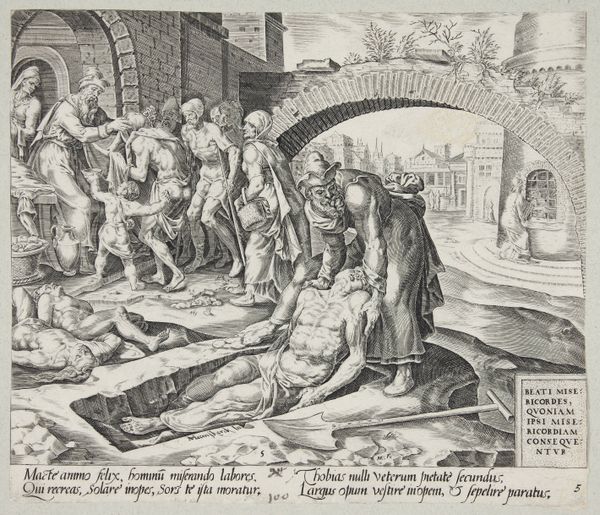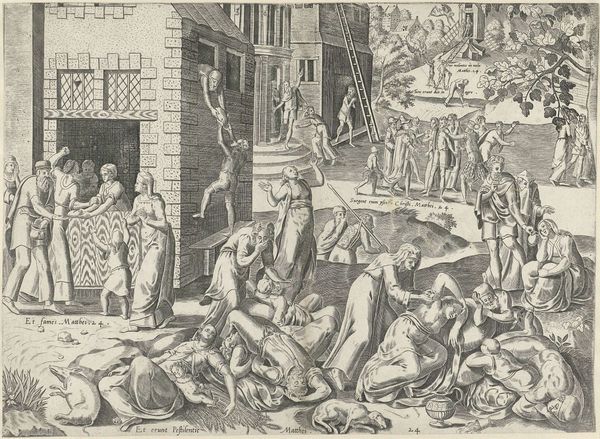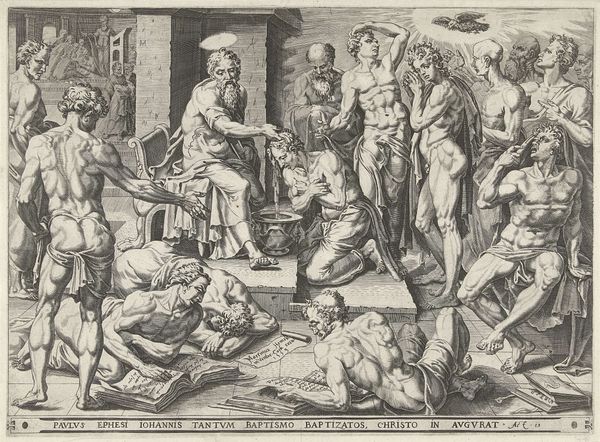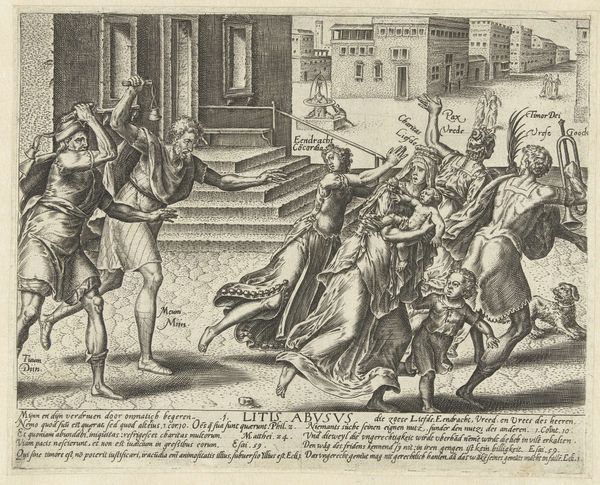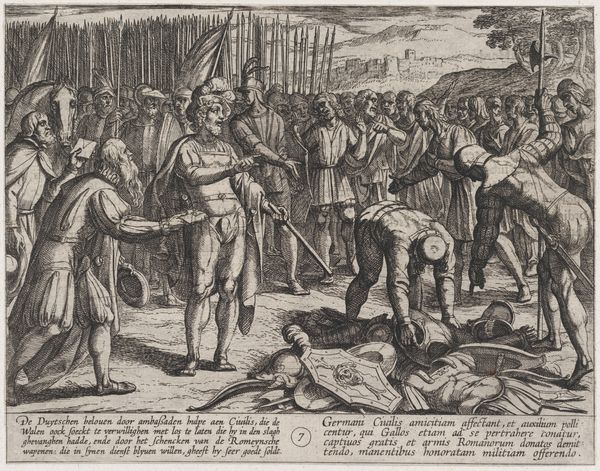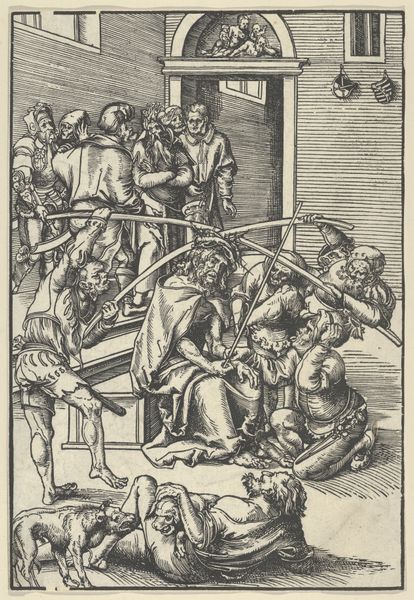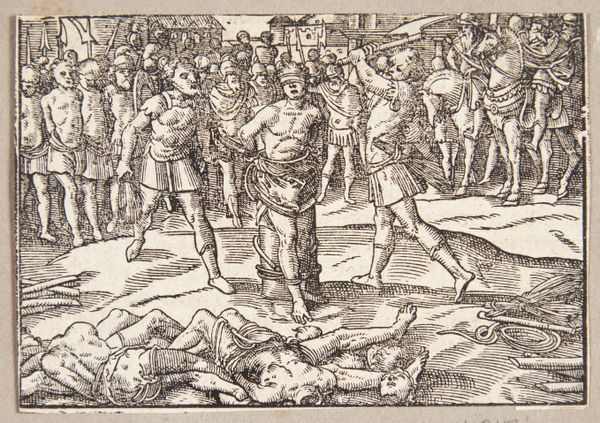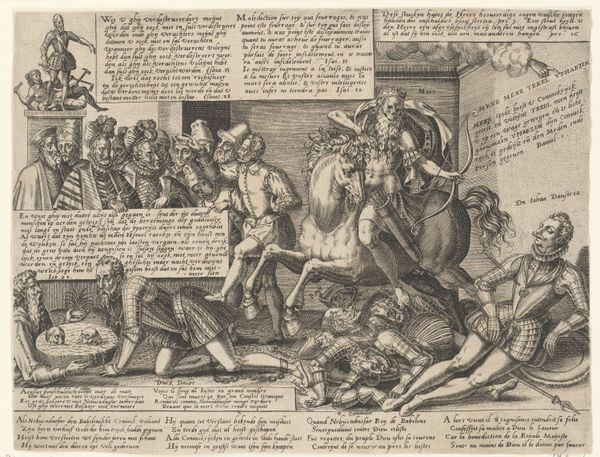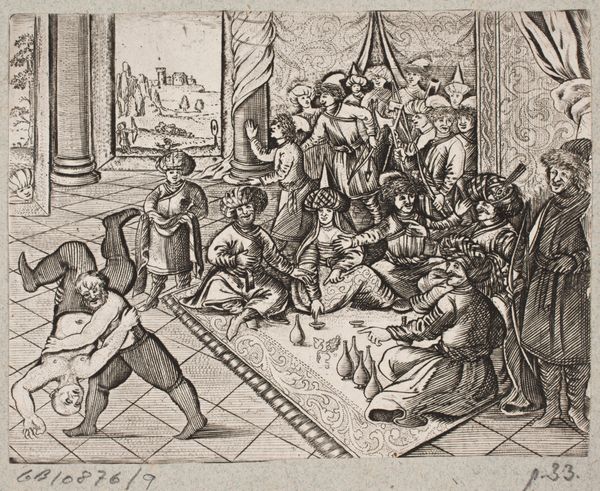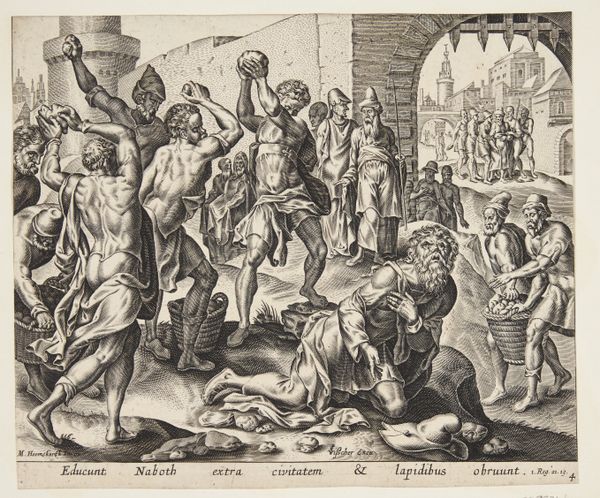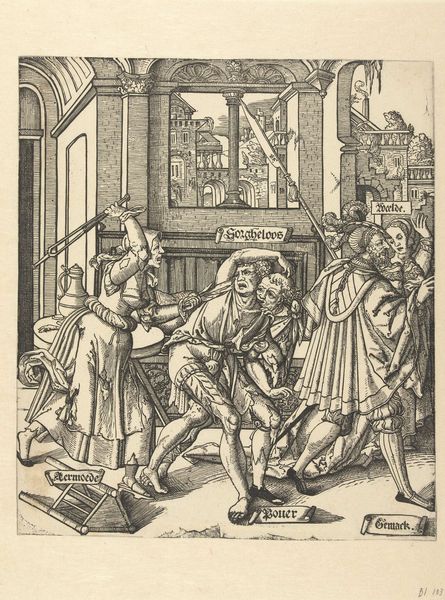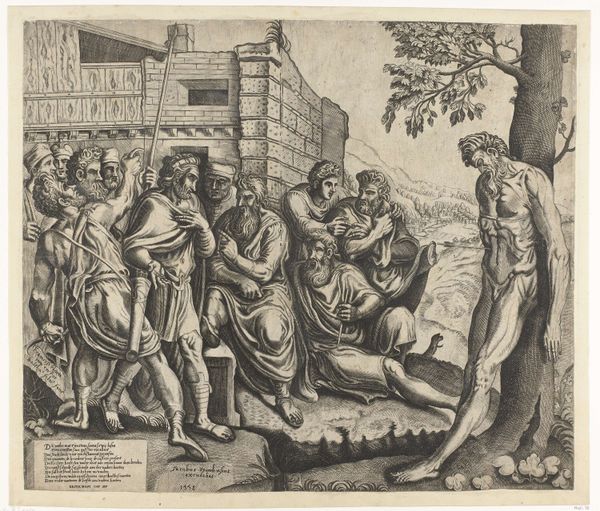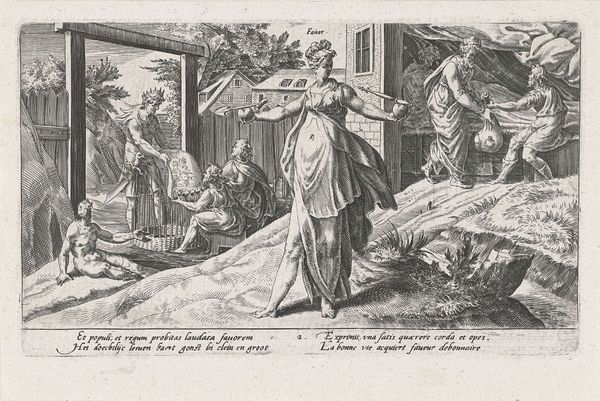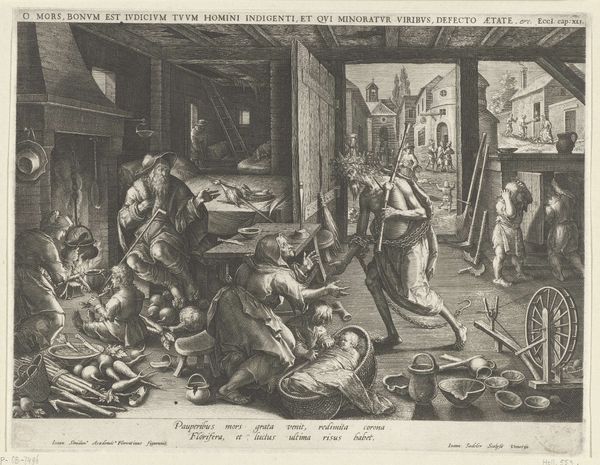
print, engraving
#
narrative-art
# print
#
mannerism
#
history-painting
#
engraving
Dimensions: 204 mm (height) x 244 mm (width) (bladmaal)
Curator: Welcome, everyone. Before us is Philips Galle's engraving, "Job receiving the ill-news of his misfortunes," created in 1563. It is currently held at the SMK, the Statens Museum for Kunst. Editor: Wow, what a dramatic tumble! Right off the bat, this print evokes such a feeling of overwhelming catastrophe, like watching a slow-motion train wreck in someone else's life. That fallen figure... he looks absolutely leveled by bad news. Curator: The narrative certainly grabs you. Galle visualizes the biblical story of Job as successive messengers arrive bearing news of escalating calamities, each stripping away a different facet of Job’s prosperous life. Editor: And there they are, these heralds of doom. Each figure practically drips with concern or… almost a weird detached curiosity. But that contrast makes it even more affecting; those expressions set against Job’s complete collapse are quite the gut punch. It’s almost…theatrical, don't you think? Curator: Indeed. Galle’s Mannerist style lends itself well to heightened emotion. The exaggerated poses, the meticulously detailed background filled with visual elements, were meant to move the viewer deeply, to provoke contemplation on faith, suffering, and divine justice within the viewer. We're not just observing; we are meant to experience. Editor: And experience we do! I'm fixated on that messenger to the far left; he is running so fast that he appears as if he might fall over as well! I'd bet those darkened skies in the background set a somber tone to the rest of the story for Job. And notice the ox? I think it foreshadows all of his animals are dying. Yikes! Curator: It is the strategic construction of a scene imbued with religious meanings as the artist portrays a classic narrative that's universally associated with misfortune. By depicting this subject in such a moving and human manner, Galle ensures the story of Job endures and challenges us centuries later. Editor: You are right. Galle made me stop and reflect upon the concept of hope during immense suffering. And frankly, with such captivating details and emotion embedded in a sixteenth-century print, it feels really, really good.
Comments
No comments
Be the first to comment and join the conversation on the ultimate creative platform.
